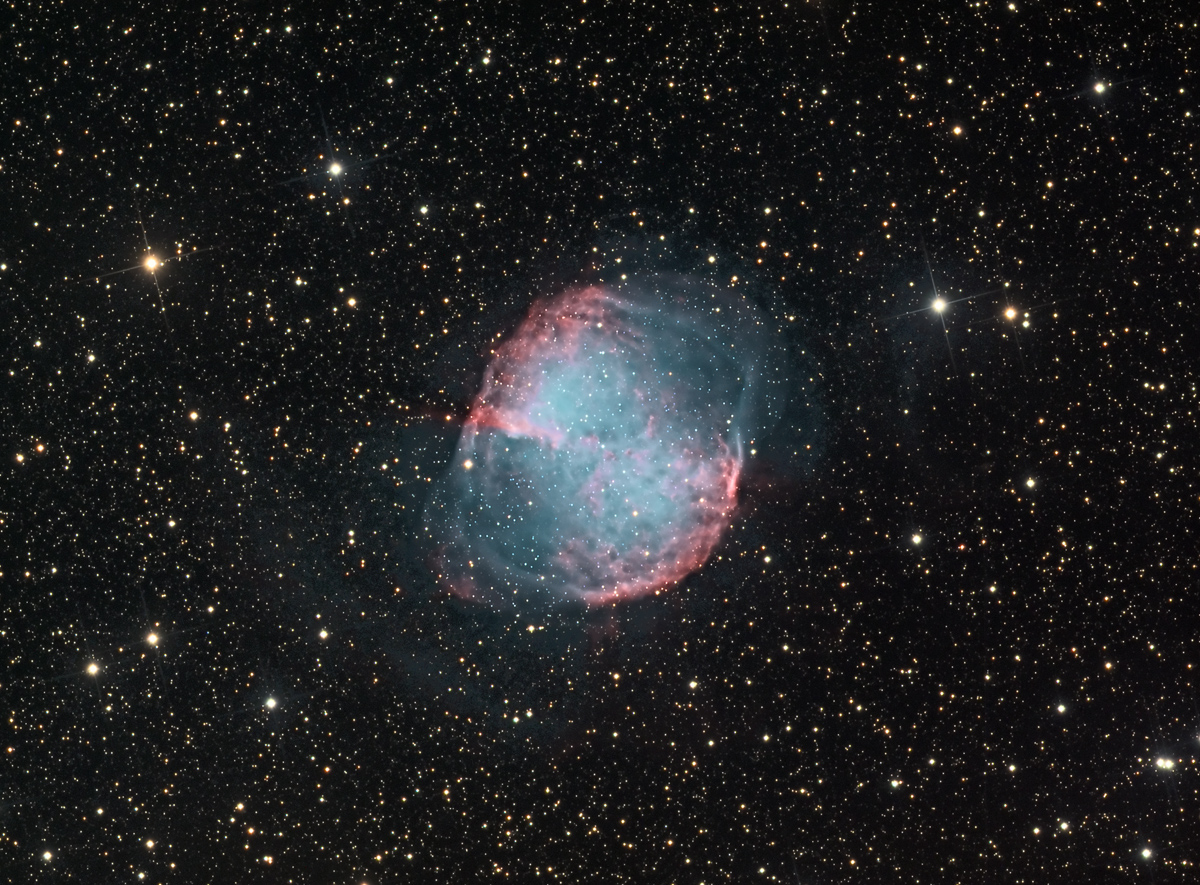 |
M27 - Planetary Nebula in Vulpecula
 |
Copyright 2010 Hap Griffin
M27 is one of a class of objects known as "planetary" nebulae, which derives its name from the fact that early astronomers saw these objects through crude telescopes and thought they resembled planets because of their apparent round shape. It was later realized that these objects are not part of our solar system at all, but are the remnants of stars which have exploded, blowing their outer layers into space. Based on studies of the rate of expansion of M27, the time since its explosion is estimated at 3000 to 4000 years. What is left of the original star can be seen in the middle of the nebula, which is now classified as a bluish hot sub-dwarf dwarf star with a surface temperature of 85,000 degrees Kelvin. The highly energetic radiation emitted by the central star excites the gases in the blown off material to glow on their own.
M27 lies at a distance of approximately 1200 light-years.
Date/Location:
June 11, 2010 Griffin/Hunter
Observatory Bethune, SC
Camera: QSI 583wsg
Filters: Astrodon E Series Generation 2 LRGB
CCD Temperature: -10 C
Instrument: Planewave CDK 12.5"
Focal Ratio: f/8
Mount: AP-1200
Guiding: Auto via the QSI camera's built in Off-Axis Guider
mirror and an SBIG ST-402 Guider
Conditions: Clear for a SC summer night
Weather: 70 F, still
Exposure: 310 minutes total (16 x 10 min Luminance, 5 x 10 min each in RGB)
Capture: CCDAutopilot 4 w/ Maxim DL Camera Control, focused automatically w/
FocusMax
Processing: Frame calibrations, alignment and stacking with ImagesPlus v3.80.
Finishing in Photoshop CS4.